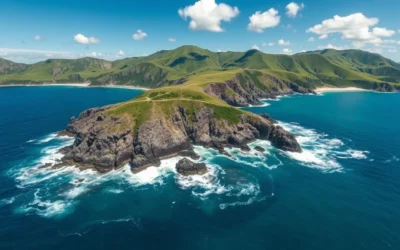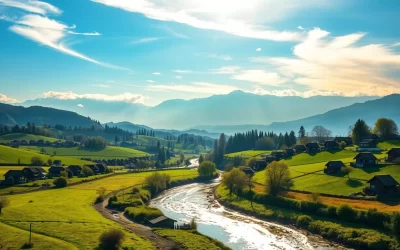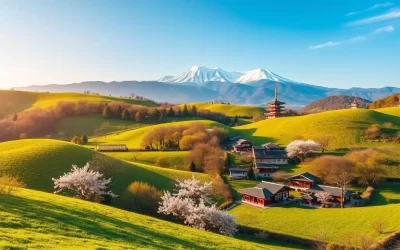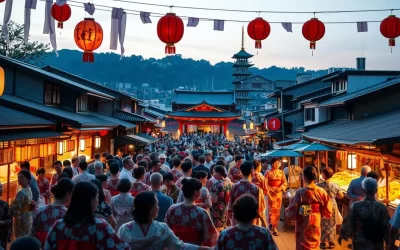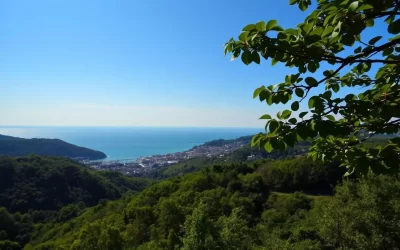Planning a trip to Toyama Prefecture can be a thrilling experience, especially when you consider the region’s unique weather patterns. Nestled between the Japan Sea and the Northern Japan Alps, this coastal region transforms with the changing seasons, offering a diverse range of experiences for travelers.
Understanding the local climate is crucial to maximizing your travel experience. Whether you’re drawn to the beauty of cherry blossoms, the warmth of summer beaches, the vibrant colors of autumn foliage, or the serenity of snow-covered landscapes, timing your visit is key. By knowing the best days to visit, you can tailor your trip to enjoy the activities and festivals that Toyama has to offer, making your journey truly unforgettable.
Discovering Toyama Prefecture: Japan’s Hidden Gem
With its unique blend of mountainous landscapes and coastal scenery, Toyama Prefecture offers an unforgettable travel experience. As you plan your trip to this Japanese gem, understanding its geographic location and the factors that make it special is crucial.
Geographic Location and Unique Features
Toyama Prefecture is located in the Chubu region of Japan, characterized by its diverse geography, including mountains and coastlines along the Sea of Japan. This diverse landscape creates a variety of climates and weather patterns across the region.
| Feature | Description | Impact on Travel |
|---|---|---|
| Mountainous Terrain | Heavy snowfall in winter | Limits access to certain areas but creates scenic landscapes |
| Coastal Areas | Milder climate compared to mountains | Offers alternative destinations during harsh winter |
| Seasonal Changes | Four distinct seasons | Provides varied experience throughout the year |
Why Weather Matters When Visiting Toyama
The weather in Toyama significantly influences the quality of your tour. For instance, the famous “Snow Walls” of the Tateyama Kurobe Alpine Route are only accessible during specific days in spring. Understanding Toyama’s weather patterns helps you pack appropriately and plan your itinerary to make the most of your days in the region.
During winter, heavy snowfall transforms the landscape, making it ideal for certain activities. However, it can also limit access to some areas. Your comfort during the tour will be significantly affected by Toyama’s weather, with humidity levels and temperature fluctuations varying dramatically throughout the year. Planning your visit according to the season and being prepared for the conditions will enhance your overall experience and make your trip more enjoyable.
Toyama Prefecture, Japan: Best Months for a Weather-Savvy Trip
Your adventure in Toyama Prefecture will be shaped by the season you choose to visit, with each offering unique experiences. Understanding the local climate and its impact on your travel plans is essential for making the most of your trip.
Overview of Toyama’s Four Distinct Seasons
Toyama experiences four distinct seasons, each with its own charm and challenges. Spring brings mild temperatures and beautiful cherry blossoms, making it a popular time to visit. Summer is warm and humid, ideal for beachgoers and those enjoying water activities. Autumn offers comfortable temperatures and stunning foliage, while winter brings significant snowfall, transforming the landscape into a winter wonderland.
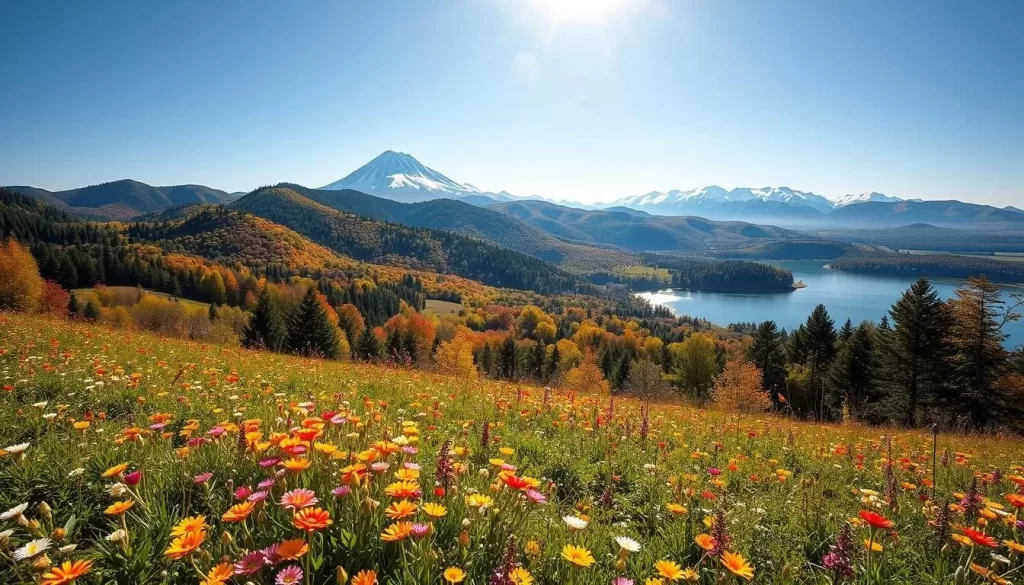
The changing seasons not only affect the weather but also influence the local events and festivals. For instance, the Owara Kaze no Bon Festival celebrates the coming of autumn winds, showcasing traditional dances and music.
How Climate Affects Your Travel Experience
The climate in Toyama directly impacts your travel experience, from the attractions you can visit to the activities you can enjoy. Weather conditions can affect the accessibility of certain areas, particularly in mountainous regions where snow can close roads for several days.
- Seasonal events and festivals are scheduled around traditional weather patterns, enhancing your cultural experience.
- Your photography opportunities will vary dramatically by season, with unique lighting conditions and natural backdrops.
- The crowds at major tourist sites fluctuate with the weather, with peak domestic tourism during cherry blossom season and comfortable autumn days.
- Your packing needs will vary significantly based on the time of year, from light summer clothing to serious winter gear.
- Transportation schedules and options change seasonally, with some mountain routes only operating during snow-free months.
Planning your tour itinerary with weather-related time buffers is crucial, especially during winter when snow can delay travel or during the rainy season when afternoon showers are common.
Spring in Toyama: Cherry Blossoms and Mild Weather
As spring unfolds, Toyama Prefecture transforms into a vibrant landscape of blooming cherry blossoms and mild weather. This season is a perfect time to experience the best of Toyama, with its picturesque landscapes, cultural events, and traditional festivals.
March to May Weather Patterns
During spring, Toyama’s weather is characterized by mild temperatures, ranging from 10°C to 20°C (50°F to 68°F). March marks the beginning of spring, with occasional cold snaps, while April and May bring warmer days and gentle breezes. You can expect an average of 12 sunny days in April, making it an ideal time to explore the outdoors.
| Month | Average Temperature (°C) | Sunny Days |
|---|---|---|
| March | 10-15 | 8 |
| April | 15-20 | 12 |
| May | 18-23 | 15 |
Cherry Blossom Viewing Spots
Toyama is renowned for its stunning cherry blossom displays. You can participate in Hanami (flower viewing) parties throughout the prefecture, a centuries-old tradition where locals and visitors gather under blooming trees to celebrate spring’s arrival. Some popular cherry blossom viewing spots include the Kureha Hill and the Tateyama Kurobe Alpine Route.
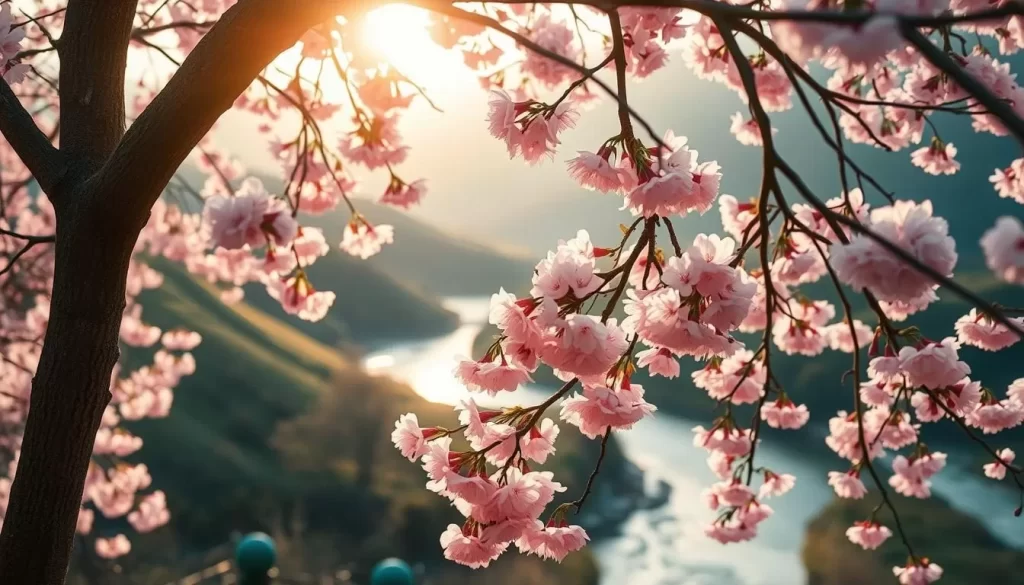
Spring Festivals and Cultural Events
Spring in Toyama is not just about cherry blossoms; it’s also a time for vibrant festivals and cultural events. The Tonami Tulip Fair in late April to early May showcases over 3 million tulips in bloom, making it one of Japan’s largest flower festivals. You can also experience the Iwase Hikiyama Festival in early May, featuring elaborate festival floats paraded through the streets. Additionally, many temples and shrines hold special spring festivals and rituals, offering glimpses into spiritual practices tied to agricultural cycles and seasonal transitions.
During these days, you’ll find special spring menus at local restaurants, featuring seasonal mountain vegetables (sansai) that are deeply connected to the regional food culture. Cherry blossom-themed products and limited-edition local specialties appear in markets and shops, offering unique souvenirs that capture the ephemeral nature of spring.
Summer Adventures in Toyama Prefecture
Summer in Toyama Prefecture is a season of adventure, offering a mix of beach activities, cultural festivals, and unique events. As you plan your trip, you’ll find that the warm weather and long days provide the perfect backdrop for exploring this beautiful region.
June to August Temperature and Rainfall
During the summer months, Toyama Prefecture experiences warm temperatures, with average highs often reaching above 30°C (86°F). June marks the beginning of the warmer season, with July and August being the hottest months. It’s also a period of significant rainfall, with occasional typhoons. You should be prepared for both heat and potential rain showers during your visit.
Beach Destinations and Water Activities
Toyama Prefecture boasts beautiful beaches and offers a range of water activities during the summer. You can enjoy swimming, surfing, or simply relaxing on the beach. Some popular beach destinations include Etomo Beach and Kureha Beach. The clear waters of Toyama Bay provide a perfect setting for water sports and activities.
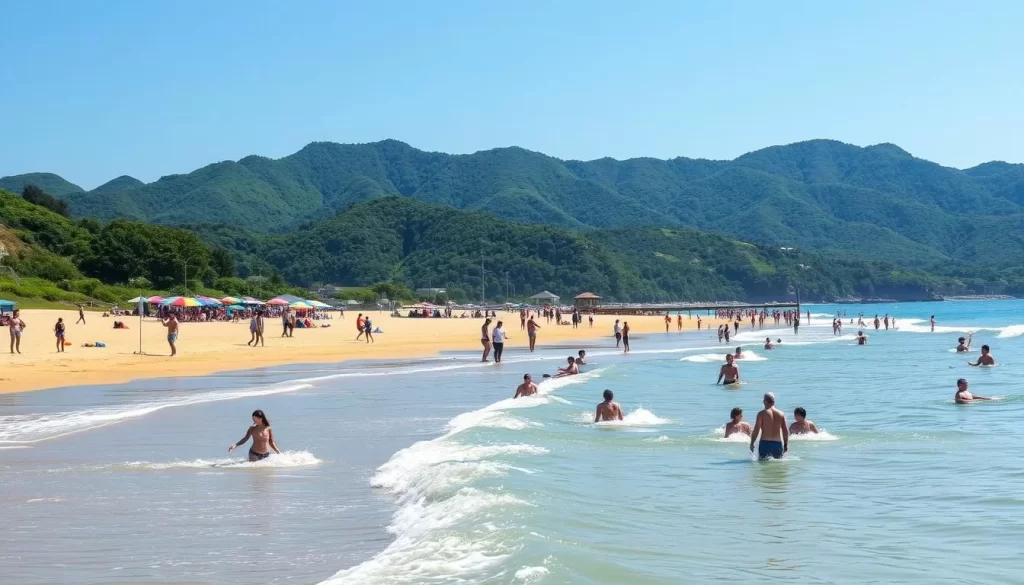
Summer Festivals Including the Owara Kaze no Bon
Summer in Toyama is also a time for vibrant festivals, showcasing the region’s rich culture. One of the most notable events is the Owara Kaze no Bon Festival, which takes place in early September. Although it’s technically at the end of summer, it’s a significant cultural experience. Other summer festivals include the Tatemon Festival in July, featuring massive wooden structures, and the Mikurumayama Festival in Takaoka City, known for its elaborate festival floats.
You can witness traditional music and dance performances, purification rituals, and enjoy local seasonal specialties during these festivals. The events offer a unique cultural experience, allowing you to immerse yourself in Toyama’s heritage.
Fall Colors and Cultural Experiences
Autumn in Toyama is a season of transition, marked by stunning fall colors and a plethora of cultural events that showcase the region’s rich heritage. As the summer heat dissipates, the landscapes transform into a kaleidoscope of colors, creating a picturesque backdrop for various festivals and seasonal activities.
September to November Weather Conditions
The autumn season in Toyama is characterized by mild temperatures, with average highs ranging from 18°C to 23°C (64°F to 73°F) in September and October, gradually cooling down in November. You can expect comfortable weather conditions, making it an ideal time to explore the region’s natural beauty and cultural landmarks.
Best Spots for Autumn Foliage in Toyama
Mountain and lakeside areas are popular destinations for autumn foliage, but you can enjoy the colors practically anywhere in Toyama. Some of the best spots include:
- The scenic Shogawa Gorge, known for its vibrant autumn colors
- Lake Kurobe, offering breathtaking views of the surrounding mountains
- The historic town of Takaoka, with its picturesque landscapes and traditional architecture
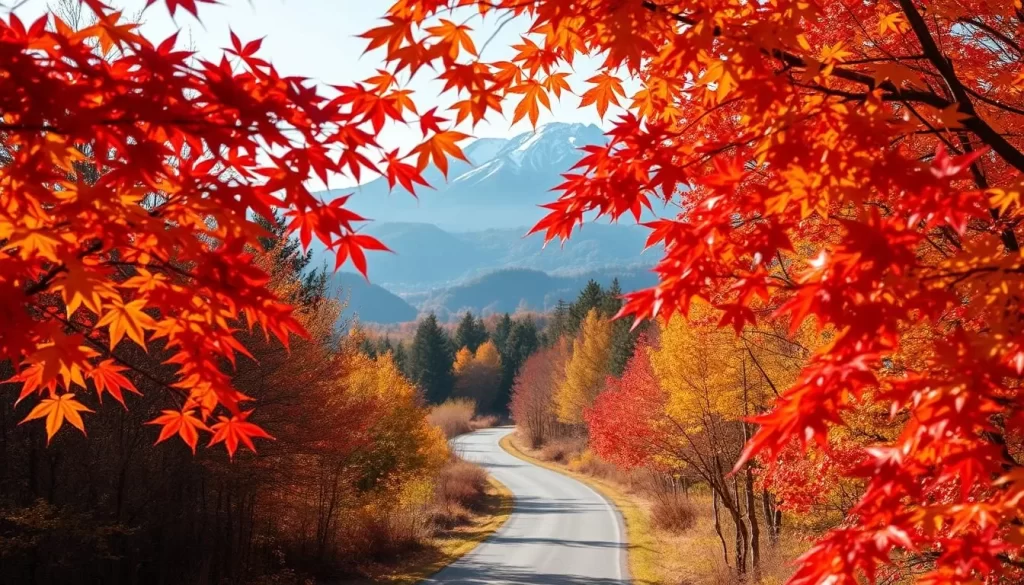
Fall Festivals and Seasonal Food
Autumn in Toyama is a time for celebration, with various festivals and events taking place throughout the season. Some highlights include:
- The Toyama Chindon Contest in October, showcasing traditional Japanese street performance
- Autumn harvest festivals, featuring rice harvesting ceremonies and local cuisine
- The Takaoka Manyo Festival in early November, celebrating Japan’s ancient literary traditions
- Seasonal food experiences, including matsutake mushrooms, persimmons, and new rice (shinmai)
You can also enjoy traditional sake brewing tours and tasting events, as well as food tours focusing on autumn specialties.
Winter Wonderland: Snow and Hot Springs
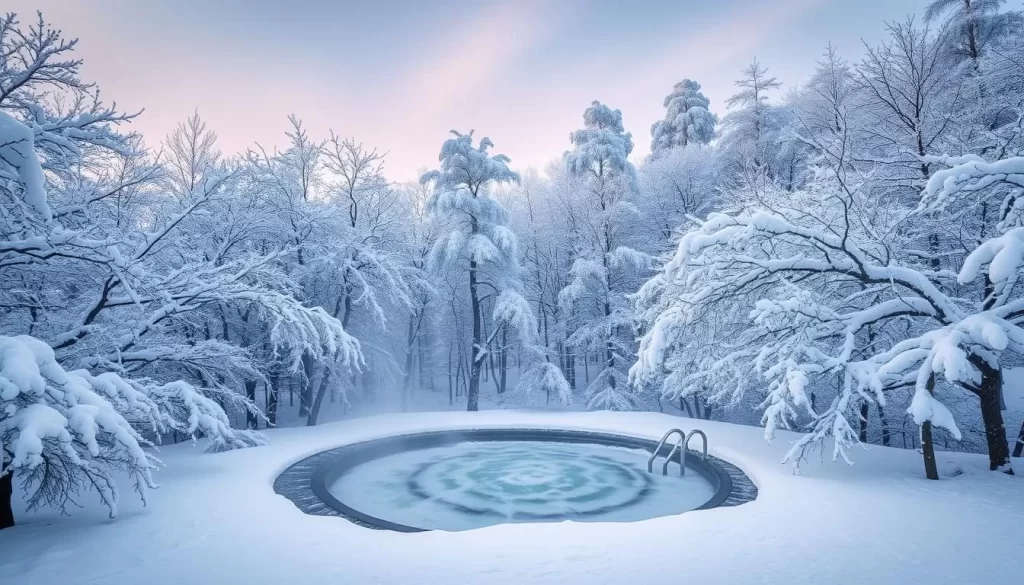
Toyama Prefecture in winter is a haven for those seeking a tranquil escape amidst snow-covered landscapes and rejuvenating hot springs. As the snowflakes gently fall, the region transforms into a winter wonderland, offering a unique blend of adventure and relaxation.
December to February Snow and Temperatures
During the winter months, Toyama Prefecture experiences significant snowfall, with temperatures often dropping below freezing. The average temperature ranges from 0°C to 5°C (32°F to 41°F), creating a perfect environment for snow activities and hot spring bathing. You can enjoy your winter days exploring the snowy landscapes or relaxing in a hot spring.
Shogawa Gorge and Gokayama Snow Landscapes
The Shogawa Gorge and Gokayama regions are renowned for their breathtaking snow-covered landscapes. As the snow falls, these areas become picturesque winter wonderlands, ideal for snowshoeing, skiing, or simply taking in the views. The scenic beauty of these regions is enhanced by the traditional gassho-zukuri houses in Gokayama, a UNESCO World Heritage site.
Unazuki Onsen Winter Experiences
Unazuki Onsen is particularly magical in winter, with its hot spring baths offering a perfect contrast to the snowy landscapes. The “Unazuki Onsen Winter Fantasy” illumination event runs from January through March, featuring light displays, snow sculptures, and weekend fireworks. You can enjoy hot spring bathing while snowflakes fall around you, followed by a warm experience at a traditional ryokan inn.
Some of the highlights of visiting Unazuki Onsen in winter include:
- Open-air hot spring baths (rotenburo) providing a quintessential Japanese winter experience.
- The therapeutic benefits of hot spring bathing, considered especially effective during winter.
- Culinary experiences peaking during winter, with hot pot dishes featuring seasonal seafood.
- Special winter tour packages combining hot spring stays with guided snow activities.
- The scenic Kurobe Gorge Railway operating special winter services on weekends and holidays.
Winter is a great time to experience the full range of what Toyama Prefecture has to offer, from its natural beauty to its rich cultural heritage. Whether you’re looking for adventure or relaxation, Toyama’s winter landscapes and hot springs provide a unique and unforgettable experience that will leave you refreshed and rejuvenated for days to come.
Planning Your Weather-Perfect Trip to Toyama
Toyama’s varied climate means that the perfect time to visit depends on what you want to experience, whether it’s cherry blossoms or snow landscapes. To make the most of your trip, consider aligning your travel plans with the season that best suits your interests.
For a smooth travel experience, it’s a good idea to build flexibility into your itinerary, especially during transitional seasons when weather can be unpredictable. Planning your visit during weekdays can help you avoid crowds at popular world heritage sites.
Some tips to enhance your trip include splitting your time between different elevation zones to experience multiple seasons, using weather apps for hyperlocal forecasts, and considering a guide for specific seasonal activities. The shoulder months (May, June, September, and October) often offer a great balance of good weather, reasonable prices, and fewer crowds.
By planning your trip according to these tips and being mindful of the season, you can have a more relaxed and enjoyable experience in this beautiful one Japan destination.
The above is subject to change.
Check back often to TRAVEL.COM for the latest travel tips and deals.

